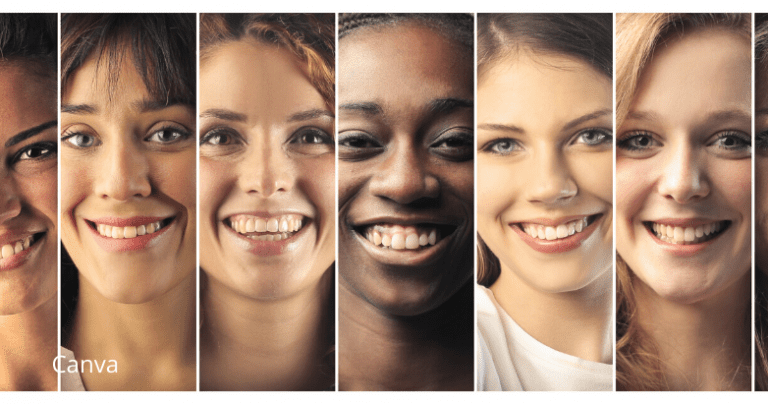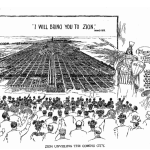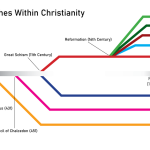
In my first two posts on women and injustice (“women, injustice, and the Bible #1” and “women, injustice, and the Bible #2”) I noted some of the injustices women face in the US. In all reality, what I set forth was fairly mild. The global oppression of women is tragically far more grievous.
In many places, young girls, often teenagers, are forced into marrying men typically much older men. In fact, one-third of the world’s girls are married before they are 18. One of every nine are married before they turn 15.
Throughout the world women, simply because of their gender, are routinely deprived of an education[1] and other opportunities afforded to men. One might think that denying women the opportunity of education is not a significant issue.
The reality, however, is that by being denied an education women remain dependent upon men and unable to escape these systems of oppression because they lack the necessary education to provide for themselves. These marriages deny young women the opportunity to achieve their dreams of being teachers and doctors and to have a future of their own.[2]
Sexual violence against women
When it comes to sexual violence, Mae Cannon states, “Women are the most vulnerable community.”[3] Globally one out of every three women have been a victim of some form of physical violence by an intimate partner.[4]
The United Nations reports that “violence against women and girls is among the most widespread, and devastating human rights violations in the world, but much of it is often unreported due to impunity, shame and gender inequality.”[5]
Sexual violence against women is not just an international issue. It is a domestic problem as well.
The National Sexual Violence Resource Center reports that in the US 20% of women will be raped at some point in their life.[6] The same report states that 25% of girls in the US will experience sexual abuse before they turn 18.
But it gets worse.
Sex trafficking
In response to the national #MeToo and #ChurchToo movements, which were intended to bring awareness to the unjust treatment of women, the Southern Baptist Convention president, J. D. Greear, commissioned a Sexual Abuse Advisory Group within the denomination. After a two-year study, the Commission issued a report titled, “Caring well.”[7] In the report, the commission acknowledges, “Although research varies on the prevalence of abuse in America, the commonly accepted rates of abuse from the most frequently cited sources are staggeringly high.”[8]
When it comes to the proliferation of sexual abuse towards women it is hard to underestimate how serious a problem it is. Over 70% of the estimated 30-40 million people enslaved today are women.[9] Most of the women who are enslaved are sex trafficked. In fact, there are as many as ten times more women trafficked into sex slavery today than there was the total number of slaves brought to the new world.
The numbers related to sex trafficking in the US are alarming. According to a report in Business Review, “The United States, along with Mexico and the Philippines, was ranked one of the world’s worst places for human trafficking in 2018. In the US, there is no official number of human trafficking victims, but estimates place it in the hundreds of thousands.”[10]
Domestic violence against women
Domestic violence, which is found in every country of the world, is the most prevalent form of violence against women.[11] The problem is exacerbated by the fact that approximately 603 million women live in countries where domestic violence is still not a crime.[12]
As one author put it: “Though we find it in every country across the world, its specific shape still often relates to cultural conditions in those countries. It is compounded by traditional practices where girls are denied education and pushed into early and forced marriages. It is bolstered by attitudes that husbands have the right to ‘punish’ their wives for failing in their duties. It is underpinned by dowry requirements and preference for sons. It is buttressed in affluent societies by stigma, fear of humiliation, and disengagement, and masked by distorted views of women’s sexuality. It is shielded by legal indifference whereby many cultures ignore the pleas of women trapped in violent relationships, even when they are subject to physical, psychological, or sexual assault. And even in those countries where domestic abuse is acknowledged as a criminal offense, it can remain difficult for a woman to find protection from a vicious partner.[13]
The global devaluing of women
Throughout the world, girls are selectively aborted simply because they are females. A far higher rate of newborn girls are exposed and allowed to die. Globally, women are consistently denied basic human rights, such as access to education and medical care, which are regularly afforded to boys.
Kristof and WuDunn note, “The most important indicator of whether a fetus will be aborted; a girl will be enslaved in a brothel; a wife will be abused in her marriage or family, or a woman will be denied a place of decision making in her family or community is not based on her gender, but on the value we assign to gender.”[14]
Injustices against women, from failing to pay them at the same rate as similarly qualified men performing the same job, to sexual abuse, to sex trafficking, to gender-selective abortions and female infanticide are a clear indication of the global devaluing of women.
Mimi Haddad adds, “In study after study, research suggests that when a culture values females as much as males, girls are more likely to survive to adulthood. For this reason, gender justice begins with an idea—that males and females are of equal worth.”[15]
There is no doubt that economics plays a significant role. Some families simply cannot afford to raise a girl and pay a dowry when she gets married, only to lose her to another family. But this alone does not account for the vast majority of injustices that occur to women around the world.
The global oppression of women occurs at the pandemic levels that they do because women are systemically devalued.
Injustices against women, from failing to pay them at the same rate as similarly qualified men performing the same job, to sexual abuse, to sex trafficking, to gender-selective abortions and female infanticide are a clear indication of the global devaluing of women.
Conclusion
Injustice towards women may well be the leading issue pertaining to justice in the world today. Almost every society has a history of declaring that women are inferior to men. Such convictions manifest themselves in an abundance of injustices towards women in almost every aspect of society.
Injustices against women in the workplace are intolerable. Wage discrimination serves as an indicator of the conviction that women are not as valued as men. The devaluing of women manifests itself in the increase of harassment towards women.
Injustices against women, unfortunately, are not limited to the workplace.
Women are abused in virtually all aspects of life.
Joseph Cimpian, writing for the Brooking’s Institute states, “The obstacles that women face are largely societal and cultural. They act against women from the time they enter kindergarten—instilling in very young girls a belief they are less innately talented than their male peers—and persist into their work lives. Educational institutions—with undoubtedly many well-intentioned educators—are themselves complicit in reinforcing the hurdles. In order to dismantle these barriers, we likely need educators at all levels of education to examine their own biases and stereotypes.[16]
If you have been blessed by this blog post and would be willing to give a tax-deductible contribution in order to support determinetruth ministries and make possible future posts like this you may do so by following this link: https://tithe.ly/give?c=3648601
[1] Two out of three of the world’s illiterates are women. See: https://www.savethechildren.org/us/what-we-do/global-programs/education/girls-education.
[2] See: https://www.icrw.org/child-marriage-facts-and-figures/.
[3] Cannon, Mae Elise. Beyond Hashtag Activism. InterVarsity Press. Kindle Edition. Loc 3091.
[4] See: https://ncadv.org/learn-more/statistics.
[5] https://news.un.org/en/story/2019/11/1052041. Last accessed Aug 25, 2020
[6] https://www.nsvrc.org/sites/default/files/publications_nsvrc_factsheet_media-packet_statistics-about-sexual-violence_0.pdf . Last accessed 9-29-20.
[7] https://caringwell.com/wp-content/uploads/2019/06/SBC-Caring-Well-Report-June-2019.pdf . Last accessed 9-29-20.
[9] IJM estimates the number of global slaves at around 40 million. https://www.ijm.org/slavery ; last accessed 9-29-20. The Global Slavery Index 2016 estimates the number of slaves at 48.5 million: https://www.globalslaveryindex.org/download/ last accessed 9-29-20; while International Labor Union the estimates 20 million: https://www.equalitynow.org/campaigns/trafficking-survivor-stories/trisha last accessed 9-29-20.
[10] https://www.businessinsider.com/human-trafficking-in-the-us-facts-statistics-2019-7#the-united-states-along-with-mexico-and-the-philippines-was-ranked-one-of-the-worlds-worst-places-for-human-trafficking-in-2018-in-the-us-there-is-no-official-number-of-human-trafficking-victims-but-estimates-place-it-in-the-hundreds-of-thousands-2. Last accessed 9-30-20. s
[11] Men also suffer from domestic violence. When they do, they are even less likely than women to speak out.
[12] Bachelet, Michelle, UN Women’s Executive Director, press release, 12 November 2012.
[13] Storkey, Elaine. Scars Across Humanity (pp. 94-95). InterVarsity Press. Kindle Edition.
[14] Nicholas D. Kristof and Sheryl WuDunn, Half the Sky: Turning Oppression into Opportunity for Women Worldwide (New York, NY: Vintage, 2009), Cited in Mimi Haddad, Ideas have consequences, 9.
[15] Mimi Haddad, Ideas have consequences, 9.
[16] https://www.brookings.edu/blog/brown-center-chalkboard/2018/04/23/how-our-education-system-undermines-gender-equity/ accessed Aug 25, 2020.












